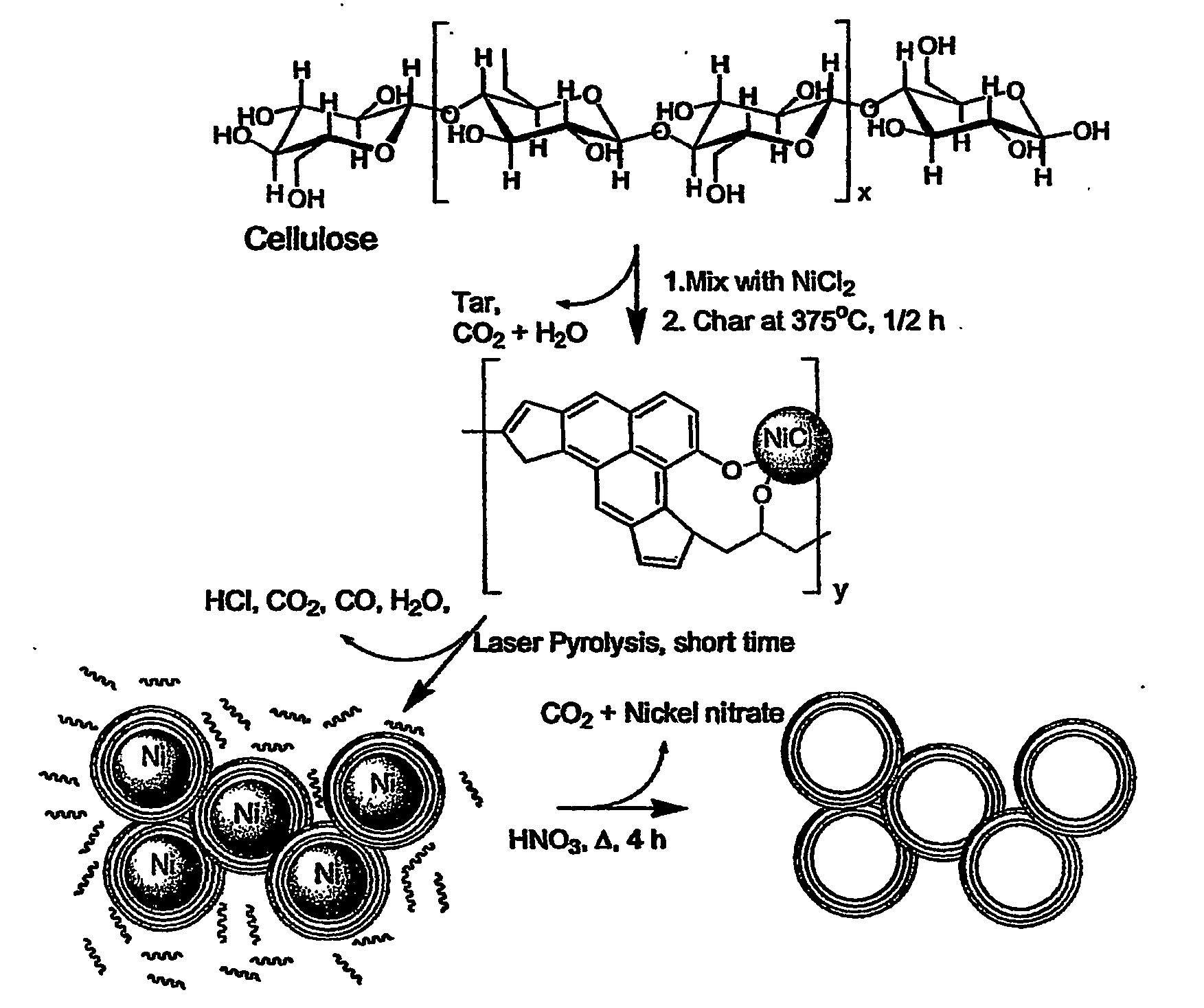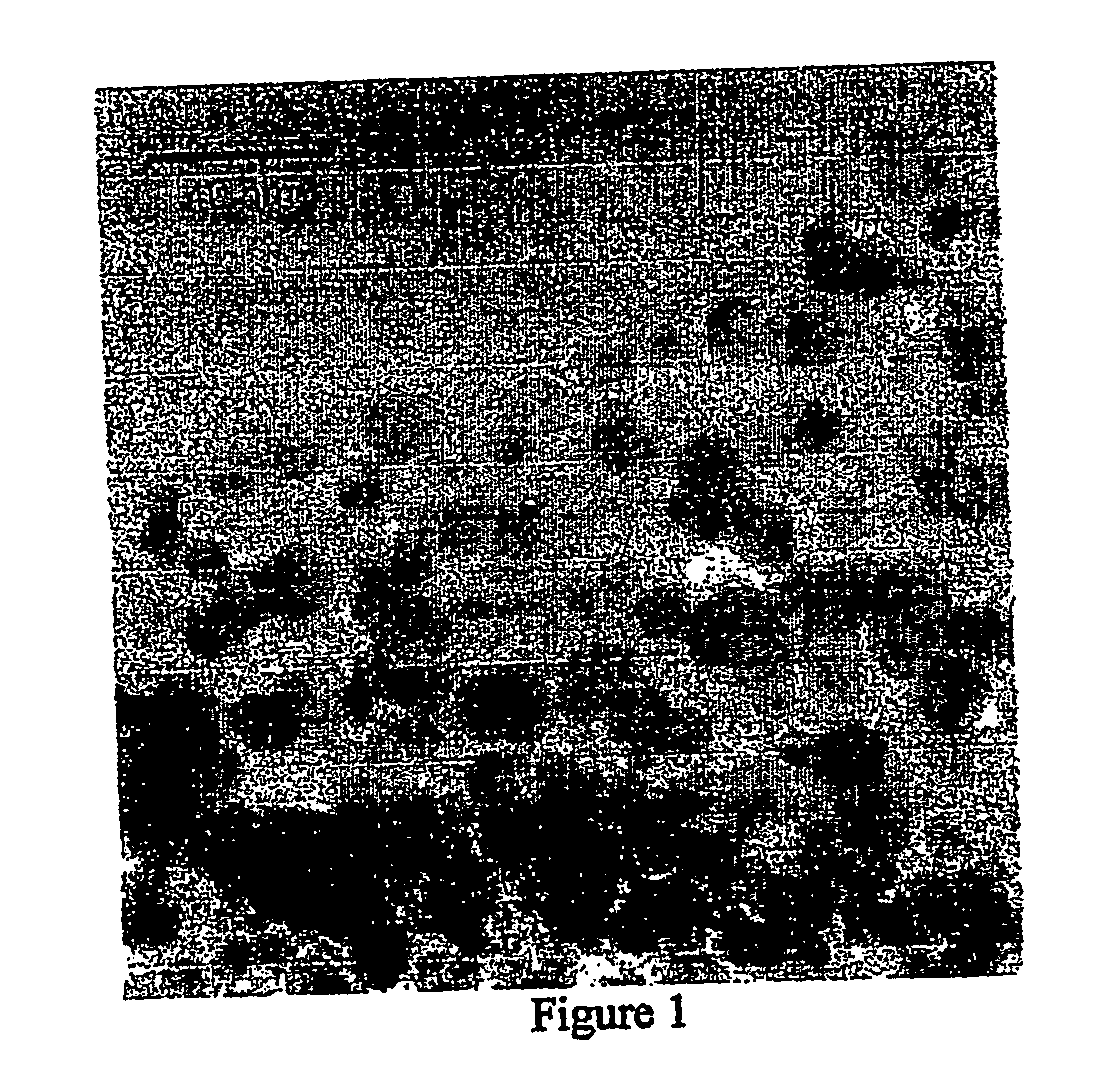Laser pyrolysis method for producing carbon nano-spheres
- Summary
- Abstract
- Description
- Claims
- Application Information
AI Technical Summary
Benefits of technology
Problems solved by technology
Method used
Image
Examples
Embodiment Construction
[0033] The present invention is based on the novel discovery that the chemistry of charring carbonaceous substrate materials, particularly cellulose, can be modified in various surprising and advantageous ways by the addition of certain particular types of metals, e.g., in the form of metal salts, which can act as a template for the charring material. Furthermore, these metal particles embedded in the char have also been found to favorably influence the subsequent pyrolysis chemistry and allow the production of the desired carbon nanoparticle morphology. Finally, the intermediate production and isolation of the nano-sized metal templates (metal nanoparticles) in accordance with this invention is a further desired outcome.
[0034] Transition metals have been known previously for their efficient production of single- and multi-wall nanotubes. See, for example, Colomer, J. F.; Bister, G.; Willems, I.; Kónya; Fonseca, A.; Van Tendeloo, G.; Nagy, J. B. Chem Commun. 1999, 1343, which liter...
PUM
| Property | Measurement | Unit |
|---|---|---|
| Temperature | aaaaa | aaaaa |
| Temperature | aaaaa | aaaaa |
| Temperature | aaaaa | aaaaa |
Abstract
Description
Claims
Application Information
 Login to View More
Login to View More - R&D
- Intellectual Property
- Life Sciences
- Materials
- Tech Scout
- Unparalleled Data Quality
- Higher Quality Content
- 60% Fewer Hallucinations
Browse by: Latest US Patents, China's latest patents, Technical Efficacy Thesaurus, Application Domain, Technology Topic, Popular Technical Reports.
© 2025 PatSnap. All rights reserved.Legal|Privacy policy|Modern Slavery Act Transparency Statement|Sitemap|About US| Contact US: help@patsnap.com



